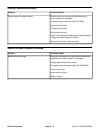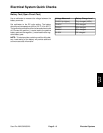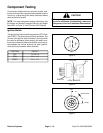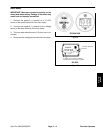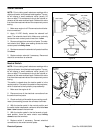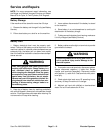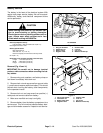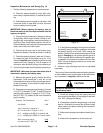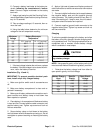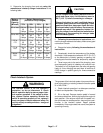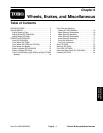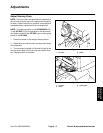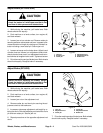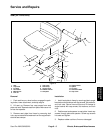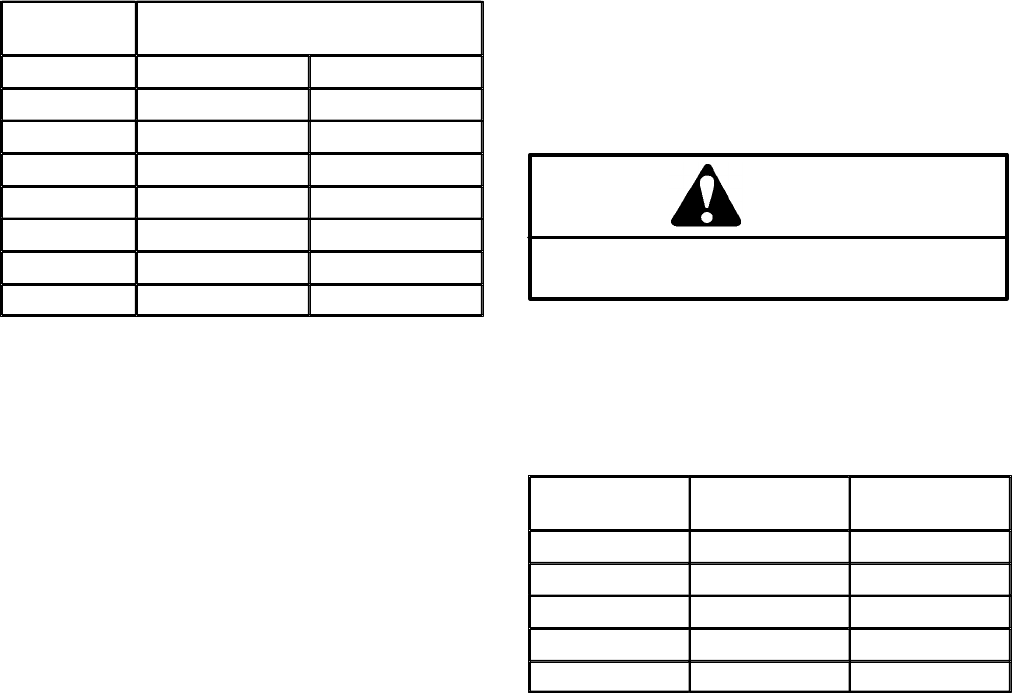
E. Connect a battery load tester to the battery ter-
minals following the manufacturer’s instruc-
tions. Connect a digital multimeter to the battery
terminals.
F. Apply a test load of one half the Cranking Perfor-
mance (see Battery Specifications) rating of the bat-
tery for 15 seconds.
G. Take a voltage reading at 15 seconds, then re-
move the load.
H. Using the table below, determine the minimum
voltage for the cell temperature reading.
Minimum
Voltage
Battery Electrolyte
Temperature
9.6
70_F (and up) 21.1_C (and up)
9.5
60_F 15.6_C
9.4
50_F 10.0_C
9.3
40_F 4.4_C
9.1
30_F –1.1_C
8.9
20_F –6.7_C
8.7
10_F –12.2_C
8.5
0_F –17.8_C
I. If the test voltage is below the minimum, replace
the battery. If the test voltage is at or above the mini
-
mum, return the battery to service.
Installation (Fig. 10 and 11)
IMPORTANT: To prevent possible electrical prob-
lems, install only a fully charged battery.
1. Make sure ignition switch and all accessories are
off.
2. Make sure battery compartment is clean and re-
painted if necessary.
3. Make sure all battery cables and connections are in
good condition and battery clamp or hold down has
been repaired or replaced.
4. Place battery in its compartment. Make sure battery
is level and flat. Connect positive cable connector onto
positive battery post. Tighten cap screw and lock nut
with two wrenches.
5. Secure battery clamp or hold down to the battery
and hold down rod with the washer and wing nut. Do not
overtighten to prevent cracking or distorting the battery
case.
6. Apply a light coat of grease on all battery posts and
cable connectors to reduce corrosion after connections
are made.
7. Connect a digital multimeter (set to amps) between
the negative battery post and the negative (ground)
cable connector. The reading should be less than 0.1
amp. If the reading is 0.1 amp or more, the unit’s electri
-
cal system should be tested and repaired.
8. Connect negative (ground) cable connector to the
negative battery post. Tighten cap screw and lock nut
with two wrenches.
Charging
To minimize possible damage to the battery and allow
the battery to be fully charged, the slow charging meth
-
od is presented here. This charging method can be ac-
complished with a constant current battery charger
which is available in most shops.
CAUTION
Follow the manufacturer’s instructions when us-
ing a battery charger.
NOTE: Using specific gravity of the battery cells is the
most accurate method of determining battery condition.
1. Determine the battery charge level from either its
open specific gravity or circuit voltage.
Battery Charge
Level
Specific
Gravity
Open Circuit
Voltage
100% 1.265 12.68
75% 1.225 12.45
50% 1.190 12.24
25% 1.155 12.06
0% 1.120 11.89
Electrical Systems Page 5 – 16 Sand Pro 2020/3020/5020



